Email Marketing
How To Write Emails That Get Read
How To Write Emails That Get Read

Want to write the perfect email for your list?
There is no such thing of course, and the ideal message is going to vary from person to person and brand to brand.
Let’s take a look at some of them…
Write A Story
I once heard the expression that ‘storytelling is SEO for the human mind’. This is incredibly true, and the fact is that the human psyche loves stories.
We have evolved over thousands of years with a culture of storytelling, and we find it very engaging and very persuasive.
How has it helped you? Or how has it helped someone you know? How did you feel during that process?
Set the scene and get people engaged – this is far less dry than simply talking in facts and figures.
Be Personal
It’s important that the tone of your messages match the tone and the nature of your business. However, it should also match the medium – which in this case is the email of course.
At the same time, by writing a more personal message (using the recipient’s name, making sure to use a regular letter structure), you’ll be more likely to reach the primary inbox and therefore to actually get read!
Try not to put any distance between yourself and your audience; make them feel as though you are speaking with them directly.
Provide Value
The objective of any good email should be to provide value. That might be in the form of a tip, or it might mean that you are providing entertainment.
Either way, you need to make sure that your audience feel glad that they took the time to open your message and read it.
That way, they’ll be more likely to do the same again next time!
In other words, your messages should be efficient and to the point – you don’t want to take up your audience’s time!
If you want to learn more about writing emails that make money, check out this post here.
OK, now you’ve crafted an email that people will want to read. The next hurdle is to actually to get your email into the Inbox and specifically their Primary Inbox. Let’s look at some ways to help you to do that…
How To Avoid The Spam Filter And Get Into The Primary Inbox

One of the biggest challenges for email marketers over the years has always been beating the spam filter.
Today this has become even harder though. Now we not only have spam boxes but also ‘social’ and ‘promotional’ boxes that further segregate our messages and make it hard for any of our messages to gain attention.
The good news is that there are strategies you can use to combat both these issues. Read on…
Language
One of the first and most important tips for avoiding the spam box is to make sure you avoid using the kinds of words and phrases that computers associate with spam.
Hopefully that last one isn’t something you would be writing about anyway!
Many email autoresponders will have a built-in check and will give your email a spam score before you add it to your automation or broadcast list so make use of it. I use Active Campaign and know this definitely has this useful feature.
Structure
If you want to get into the main inbox, then it is not enough to ‘not look like spam’ – you now need to also ‘look like a personal message’.
To do this, you should take advantage of the feature in your autoresponder that allows you to use the recipient’s name in the message.
Likewise, try to structure your message more like a conventional email. That means saying ‘Dear [Name],’ and ending with ‘Best regards,’.
That means avoiding using too many hyperlinks – keep it to just one – and it means avoiding using big images.
Sender Reputation
The most important thing to do though, is to make sure that you are focussing on delivering great value over time. If you do this, then people will open your messages and they will actually read them.
This will help to improve your ‘sender reputation’, which in turn will mean you don’t get blacklisted.
And while you’re at it, why not ask your readers to ‘whitelist’ your messages and add them to the main inbox? Sometimes the best solutions are the simplest ones! You should ask them this in the very beginning of your first email to them and hopefully they will do this.
By using a reliable email autoresponder, you are much more likely to hit the Inbox. Yes, you have to abide by their rules and many platforms frown on affiliate marketing, but as long as you are primarily focused on providing value to your readers, you should be fine.
Don’t be pushy and try to hard sell in every email or you could find yourself in hot water with your provider.
But there is nothing wrong with providing good value and then recommending something that can help them to implement what you have taught them.
I find this soft sell much more compelling in the long run and it shows that you are trying to provide something that genuinely helps your readers and that is the key to any good business. If you want to know more about writing good email copy, check out this post.
And, if you want to know more about nurturing your list, check out the featured resource below where you can get a free report about simple list building to expand your knowledge further. If you do download it, please read it and take action and good luck 😊

How To Write Effective Emails That Make Money

Email marketing has been a part of business since the early days of the internet. Many businesses fail to implement its effectiveness in making sales.
If you’re trying to decide if you should spend time creating all those emails, consider this:
- The number of people using email is set to grow to 319.6 billion by the end of 2021, according to The Eradicate Group.
- HubSpot reports that people with active email accounts had grown to 5.6 billion by the end of 2019.
- 9 out of 10 marketing professions say email is important or very important to their own business, according to a study by the Direct Marketing Association.
- Forbes reports that emails produce 50% more sales as compared to other marketing practices.
As these figures clearly show, email is essential and to be expected in your marketing plan. But with the abundance of businesses sending emails, your content needs to be of the best quality and impactful to get conversions.
There are different types of emails for different situations. There are welcome emails, promotional emails, new customer emails, client or lead engagement, cold list re-engagement, emotional trigger emails, special offer emails, new product or launch emails and many other types.
How do you know where to begin or what type of email to send?
In this post, we’ll show you where to begin with the basics of creating high converting emails.
Let’s get started.
Setting The Email Goal

Now that you know the importance of marketing with email, you might be at a loss as to where to begin. Like almost everything in business, it begins with a goal of what you want to achieve.
Create a freebie for people to receive when they sign up. Have a way for subscribers to sign up. This can be an exit popup on your website, a static landing page or any number of ways to for subscribers to sign up. You also need some sort of email service such as Active Campaign or Aweber.
Now let’s begin creating our goal for the emails.
Before you send out just any old email, first determine what the end result is you want the email to achieve. Is it to get someone to purchase something or to open the email and connect with you? Is the goal of your email to create better click-through rates?
Typical goals for an email might include:
- Getting freebie seekers to become first-time buyers your service or products.
- Increase conversions by a certain amount in a specific amount of time.
- Getting cross-sells and upsells from current purchases.
- Increase click-through rates.
- Building more engagement from current clients or customers.
- Build more relationships for your community.
- Getting feedback about your business to make improvements.
For each email, understand who’s going to receive your emails and what they want to get out of it from you.
Ask yourself these questions to define your email goals:
- Where are you right now? Check your open rates, click rates, unsubscribe rates, conversion rates or your spam rates.
- What action do you want the reader to take? This helps you tailor your content to get them to take the action you want. If it’s to read an article, for example, then let them know why the article will help them.
- Who will be receiving the email? Know which segment of your list will be receiving the email, so that your copy, images and everything in the email speaks directly to that potential group.
- How will you get them to say “yes”? Decide what you are going to promise the readers so that your email helps them be the best version of themselves with your service, product, or information.
Think about why your reader initially signed up. Ask yourself these questions:
- How can you over deliver on that?
- What do they want from you? From your business?
- What questions do they have about your niche?
- When do they need to hear from you?
- What emotions can you evoke in them?
- What are the next steps for them as your subscriber?
Now create a plan around the answers. Include the topics you’ll regularly write emails about, schedule email blasts in your calendar, and what areas people need support, guidance or encouragement.
When you know what you want to achieve with the email you can determine what type of email you want to send out and when it needs to go out. Spend the time setting your marketing and conversion goals before you begin the writing process.
When And Why Use Email
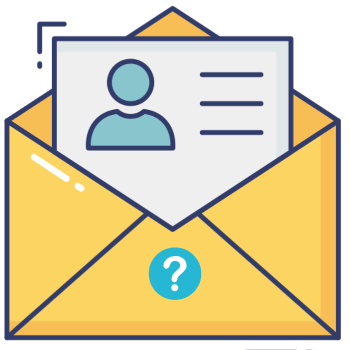
It’s a good idea to know when and why you are sending out an email. Most people who sign up for your list do so for a specific reason. And those who have been on your list for a while fall into different stages of interaction with you.
You can tell what type of emails your subscriber wants by who they are and what they do when they come to your site. This can also help you understand when to send specific emails.
Maybe they:
- Browse around, add some things to their cart, then leave: The Abandoned Cart email is triggered.
- Enthusiastically subscribed to your list: Perfect time for the Welcome email.
- Are a long-time loyal customer: Reward them with an anniversary email. These can be Milestone emails or Special offer emails.
- Post Purchase emails to new buyers who have purchased something form you. These Confirmation emails are the first ones your new subscriber gets from you. It tells them about your business and your values, helping you begin building a relationship with them. It’s also a great time to give them options to see your other products.
- Emails to boost engagement with your business and content. These can be Promotional emails that try to make an initial sale or promotes your new webinar.
- Re-engaging cold subscribers. This email tries to get subscribers who haven’t been active to take some sort of action. These can be Review Request emails or Persuasion emails.
- Nurturing your existing subscribers. These emails are the relationship builders. They provide value to the subscriber. Use Nurture emails to keep in contact and build communication with your loyal subscribers. These can be Newsletters or Curated content emails.
- They are interested in a specific subject or product you offer. Here you would be segmenting your subscribers with targeted emails. Segmenting allows you to send emails that specifically target a group of subscribers. These can be New Product Announcement emails, Nurturing or Promotional emails.
Sending emails at the right time and for the right reason keeps your list engaged and converting.
This keeps you in front of them and helps remind them to take action.
If you want to know more about building and nurturing your email list, check out the featured resource below where you can get a free report about simple list building to expand your knowledge further. If you do download it, please read it and take action and good luck 😊

Develop A Content Publishing Calendar For Your Blog
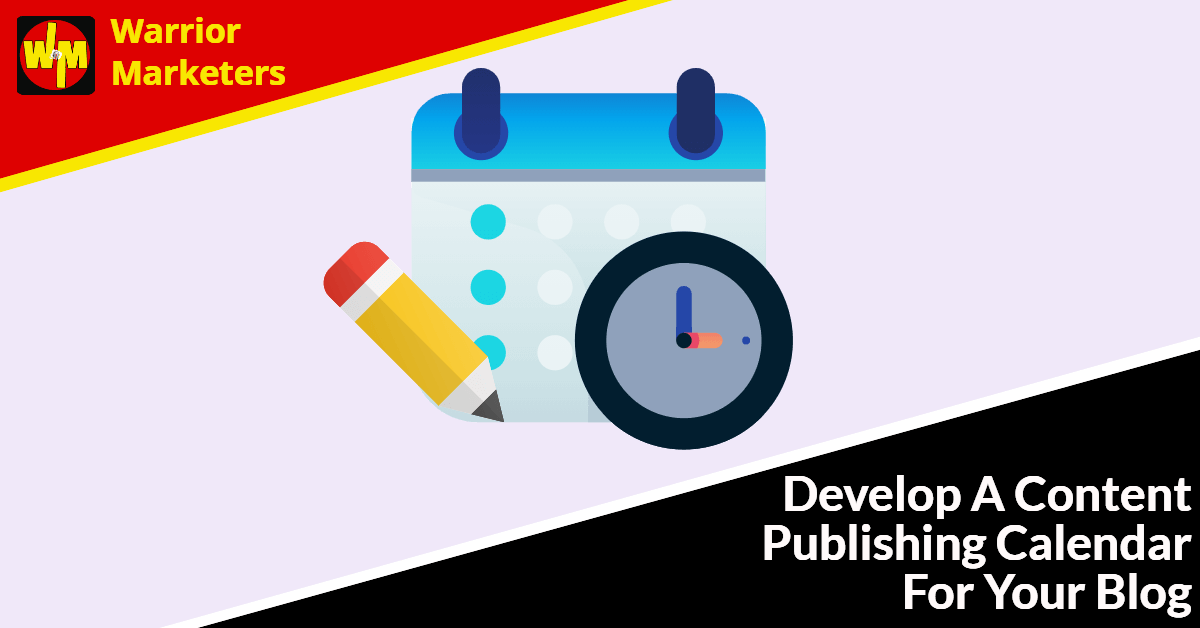
Creating a content calendar that includes matching promos, helps ensure that you meet business goals, such as list building. When you plan your written content, match it to an existing or new opt-in freebie.
Write it all on your content calendar so you can remember what purpose each item serves.
OK, let’s look at how you can flesh out your content marketing calendar.
Set Your Goals
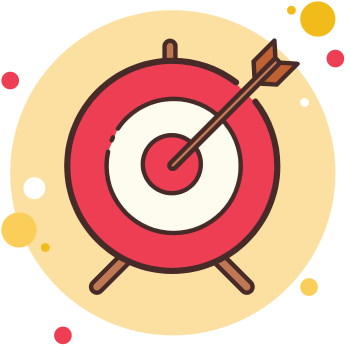
A few goals you might set are to expand brand awareness, promote thought leadership, increase word of mouth, get more leads, or make sales.
A funny meme can help you get more likes, shares, retweets, and spread brand awareness.
Product & Freebie Benefits

The best way to ensure that your content works with your products and freebies is to get familiar with them.
In other words, you must know “what’s in it for them” and what problem it solves.
Plan Publishing Frequency
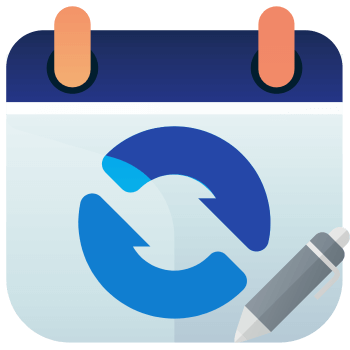
Always publish to your website first and foremost. It will serve as the hub of your business and support content will lead visitors back to the site.
If you add “supporting content” on social sites, you can safely plan on adding something several times per day. Make sure each addition is “fresh”; otherwise, you will lose followers, instead of gaining opt-in subscribers.
Create, Curate, Or Contract

You’ll want to create some of the content yourself, but content can also be easily be curated or contracted out.
Another option is to collect related bits of information from multiple places to create something new.
Write it Down

Once you have created your plan, write it down.
You can use a spreadsheet or even a Google Calendar. The WordPress Editorial Calendar plugin can also help you pre-schedule and keep track of your website’s content.
All of this is content, so it makes sense to plan a week or more at the same time. Planning this way helps to ensure that you have every piece of content needed to meet your goals. In this case, the main goal focuses on growing your mailing list.
Post Content Regularly

Posting content on a regular basis is important. When you post unique content in a variety of places, it gives your audience more opportunities to see what you’re publishing and promoting.
Therefore, stick to your plan and ensure that you add new, relevant content on a regular basis.
Website/Blog

Content comes in many forms. Add a variety to keep readers’ interest and meet their needs. Inform and educate your audience with relevant audio, video, memes, infographics, charts, interviews, how-tos, statistics, and more.
What’s important is that you post something regularly, at least three times a week, to drive traffic to the content and the related opt-in offer.
Social Media

Each social media platform has a different “personality” so it’s important to post regularly. It’s also important to look at your analytics so you can identify when your audience is most active and reading.
However, check the rules and “best practices” at each platform to get recommendations specific to that site.

Don’t neglect to email your subscribers regularly about new content on the website or provide them with exclusive info related to that content.
Ask subscribers to “share” the website content with their friends, associates, and even customers/clients, when appropriate.
Enlist the help of your subscribers and reward them for that assistance with a special offer just for them.
Guest Posting

To get more traffic and opt-in subscribers from your guest posts, link to an opt-in that is relevant to the audience in your author profile or byline.
This gives you a huge incentive to guest post exceptional content frequently.
This is a win-win-win opportunity when you post on a regular basis.
Providing content for a variety of locations helps to increase targeted traffic and targeted traffic increases opt-in rates. The more you publish, the more people read your quality content and see your opt-in offer…unless your headlines aren’t persuading viewers to click to read more.
And remember, if you want to know the best way to get started with blogging you can check out Rapid Blogging Blueprint, a premium training on creating and monetising a blog the right way.
Or you can simply click on the featured resource below for a free Blogging Fundamentals report; download, read it and take action 😊

7 Ways To Write Great Email Copy

Email marketing has overcome dozens of challenges and competition over the years and still remains one of the most effective solutions for businesses when there’s need to reach the customers directly.
Whether you’re a B2B or B2C marketer, being able to reach your customers through email makes it easier to create interest and generate more leads, not to mention revenue.
A well-written plain email can yield better results than a complex, highly decorated email with dozens of bells and whistles.
So how exactly do you write engaging and compelling marketing email? It’s actually not that complicated: you only need to observe a few copywriting practices and use them when drafting the email.
Next time you sit down to draft a message, consider these 7 tips and ask yourself whether your email meets these requirements.
Write Short, Clear And Compelling Subject Lines

Half the job of drafting good email copy is nailing the subject line.
Keep the following in mind when crafting subject lines:
- Actionable language generates the desired effect. Actionable language doesn’t necessarily describe verbs -though they help. Actionable words tell the recipient what they can do with the information provided. For instance a subject line that reads “Take Mom To Brunch” is bound to pique interest.
- Personalize if possible. Highly segmented emails always have better open rates. This would explain why the best email copy is the one you write to ONE person. Find a way to personalize the subject line and then work on providing relevant content to the recipient.
- The subject line needs to be clear first, then you can worry about making it catchy. If after drafting the subject line, you find that you can make it funny, cute, catchy, whimsical or whatever, then by all means, go for it. But never sacrifice clarity in order to add some entertainment value.
Ask Questions And Try To Convey A Sense Of Urgency

When you ask questions in the subject line you effectively pique your subscribers’ interest and get them to read the email.
One way to do this is to include time-sensitive promotions or some deadline they could miss.
Even when working with a limited number of words you can still convey urgency by making it sound as is everyone is attending the event so the readers feel as if they’ll get left out.
Appeal to The Subscribers’ Self Interest

At the end of the day, the customers only care about services and products in the context of their specific needs. As a way to address this, your copy should go beyond explaining the features of what you’re selling, and explicitly describe all the benefits of the product or service.
Remember features tell, but benefits sell.
This information will have answered the “what”, instead of “how” and “why” the subscriber should purchase the onion. If however you explained the benefits thereof, such as how the onion could spice up a recipe, or how it lowers calorie content, the reader will be interested.
Use Design Effectively

Most sales emails contain some form of design and that can enhance the message but try to support the message in the email- not detract from it.
Use design sparingly if you don’t have enough experience with it.
Several elements can make the purpose of design backfire on you: for instance, all capitalized or bolded text, white typing done over a over light background- which makes it difficult to read text, or a tiny call to action.
Support your message with a captivating photo, good color contrast and clear call to action.
Deliver What Your Subject Line promises

It is absolutely crucial for your email message to deliver what the subject line promises.
Make sure the message body doesn’t disappoint and you should have significantly high open and click-through rates.
Draft A Compelling Message
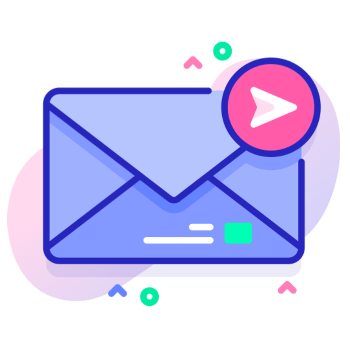
So now that you have that catchy subject line and you’ve grabbed the reader’s attention, how do craft copy that will keep them engaged, informed and ready to click?
Several issues have to be considered here:
- Establish relevancy. It takes more than a catchy name tag for your email to yield results: you have to start by establishing relevancy, so they have a reason to read the material.
- Write in the second person. This ensures you orient the copy towards the recipient, as opposed to yourself. A typical sales copy contains numerous instances where the words “you” and “yours’” are used.
- Be brief. In cases where you know plenty about the topic, you might be tempted to shove in an entire life story into the copy, but don’t. Few people read marketing emails word for word; so find a way to summarize whatever information you have to offer and allow the reader to quickly scan the document and still get the most important information.
Pump Up Your CTA With Actionable Language

Yes even emails have calls-to-action! Or at least the good ones do; and its up to you to make sure to include a button-effective call to action.
You may rely on plain text with a clear, perhaps hyper-linked call to action so your readers do something about the information offered.
Ultimately you want the reader to click on your call to action so it might not matter how many images or bolded words you have, if they don’t lead to clicks, they’re not being used properly.
If you want to know more about nurturing your list, check out the featured resource below where you can get a free report about simple list building to expand your knowledge further. If you do download it, please read it and take action and good luck 😊


























